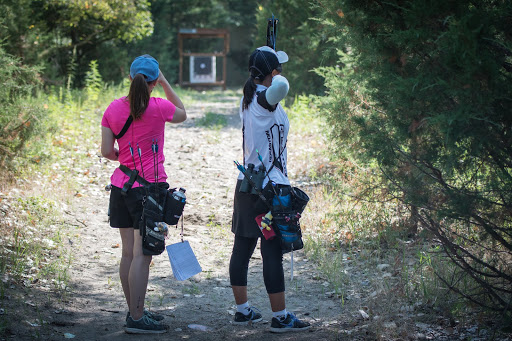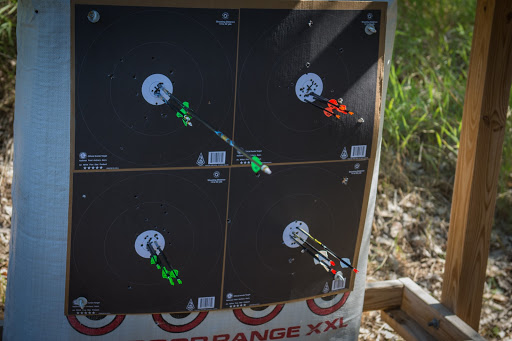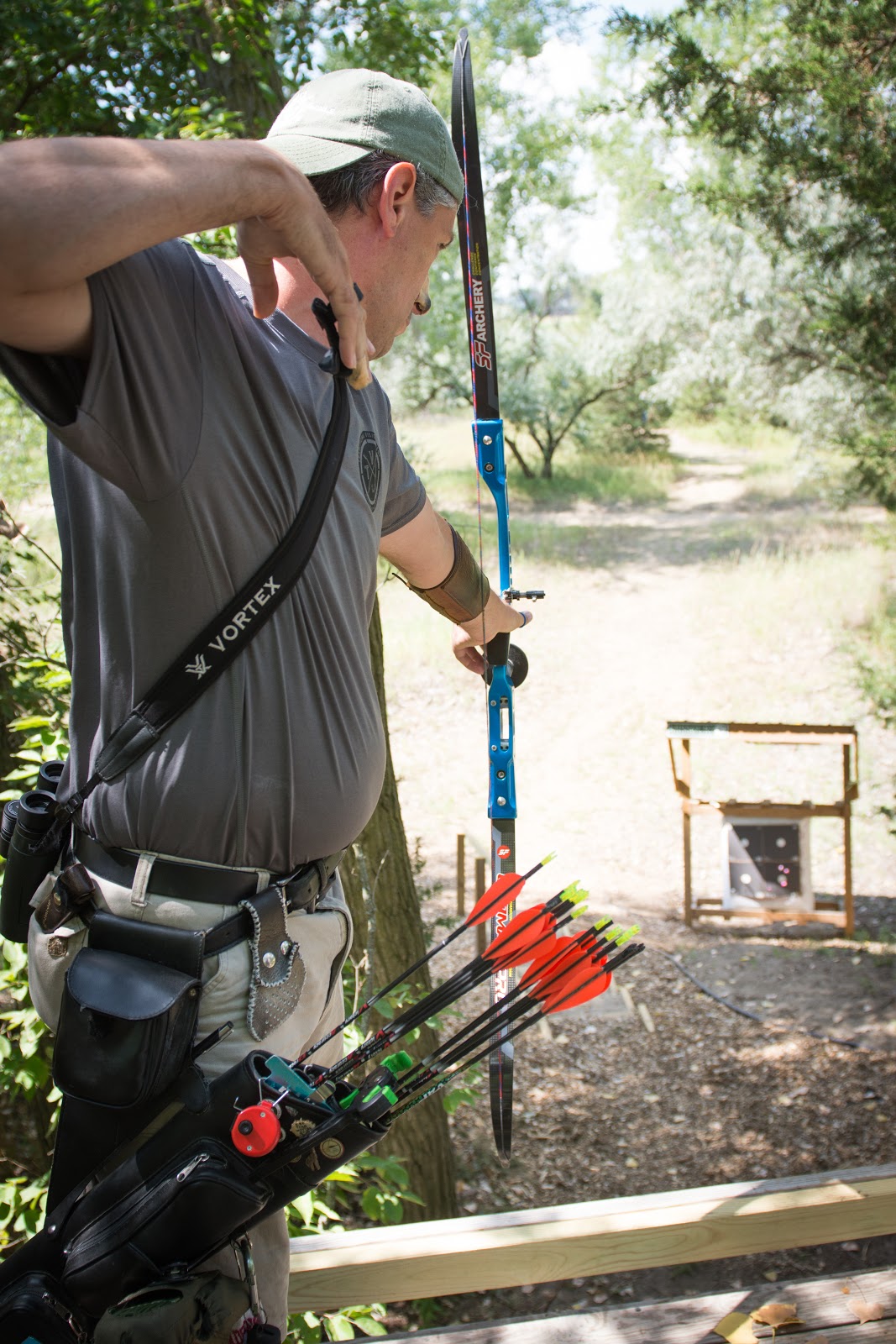NFAA News
Jun 10, 2019
Field Archery 101 - The Hunter Round
The Hunter Round is one of the three NFAA field archery rounds. With more walk-up targets, generally shorter distances, and a target face that is "easier on the eyes," it’s clear why many archers find it more conducive to higher scores when compared to the Field Round.

hunter round scoring & Range layout
Like the Field Round, the Hunter Round features either two 14-target courses or one 28-target course, with the same target sizes (65cm, 50cm, 35cm, and 20cm) and scoring system. However, distances for adults range from 11 to 70 yards, and each target face has black outer rings with a white center dot, making it visually distinct from the Field Round. The outer rings score 3 and 4 points, while the center dot is worth 5 points, with an “X” used to break ties in amateur divisions and valued at 6 points in Professional divisions. To receive the higher point value, the arrow simply needs to touch the solid scoring line. Archers still shoot four arrows per target for a maximum of 20 points for amateurs or 24 points for Professionals.
hunter round targets
Target sizes are assigned to specific distances and remain consistent across all ranges. For adults, the targets and corresponding distances include the following:
- 11 yds. → 20cm target, 4cm center dot
- 14–32 yds. → 35cm target, 7cm center dot
- 36–53 yds. → 50cm target, 10cm center dot
- 45–70 yds. → 65cm target, 13cm center dot
Review Appendix 4: Range Captain's Staking & Target Guide from the NFAA Constitution & By-Laws for a detailed description of the required distances and target sizes for each division and round type.
yardage markers & maximums
Youth and Cub distances differ from Adult distances on most targets and are clearly marked at each stake, as in the Field Round. Cubs shoot from the black markers (maximum 30 yds), Youth archers from the blue markers (maximum 50 yds), and Young Adults shoot from the red markers alongside the adults.
general field archery shooting rules
Shooting positions
When shooting in a group, the archers in a typical foursome will mutually decide who shoots from which side of the stake. On targets 1 and 15, archers will switch positions and order: those who shot first will shoot last, left-side archers move to the right, right-side to the left, and top/bottom target archers swap positions. For butts with multiple target faces, the first two archers take the bottom targets, while side-by-side targets are assigned left and right to the corresponding archer.
For target signs that list a single distance, all arrows are shot from that distance. If multiple distances are listed, it is a Walk-Up target, meaning archers shoot one arrow from each stake when four are present, or two arrows from each stake on targets with two markers. Targets are always shot starting from the farthest distance and moving forward. When four of the same distances are listed, the target is a Fan target. Archers shoot one arrow from each stake, rotating positions left to right within their group, with two arrows per target. Each arrow must be placed in the target corresponding to the archer’s shooting position—for example, arrows shot from the two left stakes must go into the left target. Any arrow hitting the wrong target is scored as a miss.
The Birdie target is the closest target at 11 yards for adults. Targets are shot vertically, with each archer choosing to shoot either top-to-bottom or bottom-to-top. Each archer selects one column on their side of the stakes (left archer chooses one of the left two columns; right archer chooses one of the right two columns), and may not shoot a column already selected by another archer.
Pass-Throughs & Bounce-Outs
Arrows that glance off the ground into the target do not count, though arrows that clearly hit an obstacle may be re-shot. Witnessed bounce-outs that appear to hit a scoring area can also be re-shot. Pass-through arrows may be carefully pushed back through the target to score, but they cannot be removed and reinserted. Arrows believed to have passed through the target may be re-shot with marked arrows, but will not count if the originals are found in the butt. If the target captain rules that a pass-through is obvious and unscoreable, the archer may re-shoot from the designated distance.
Excess or Omitted Arrows
Shooting more than the prescribed number of arrows results in a penalty of one scoring ring per extra arrow, and the highest-value excess arrows will not count. If an archer shoots fewer arrows than required in an end, they may shoot the remaining arrows only if the omission is noticed before advancing to the target. Otherwise, the omitted arrows are scored as misses.
Emergencies & Equipment Failures
An archer who leaves the range for reasons other than an emergency or equipment failure may return to their group to complete the unfinished or subsequent targets, but any arrows missed during their absence cannot be made up. If the absence is due to an emergency or an equipment failure, the archer may reshoot missed targets under the supervision of a tournament official. In the case of an equipment failure, the archer is allowed up to 45 minutes to make repairs, with the restriction that only one equipment failure is permitted per archer per day.
closing summary
To dive deeper into the other formats, be sure to check out our other Field Archery 101 blogs on the Animal Round and Field Round. Together, these three guides provide a complete introduction to the fundamentals of NFAA field archery. If you prefer to watch a video summary the NFAA Hunter Round, click HERE.
Please note, this blog provides only a summary of the rules for the Hunter Round and is not a complete list. For the full and official rules, review the NFAA Constitution and By-Laws.


